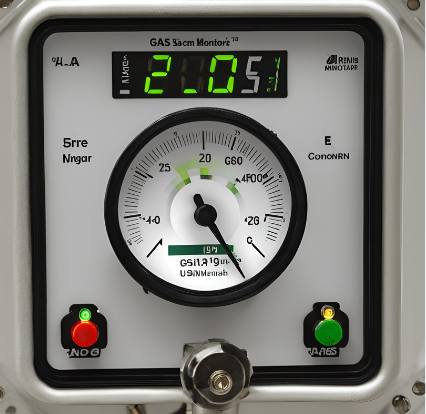Introduction to Exhaust Gas Analyzers
An exhaust gas analyzer is a critical tool used in various industries, particularly in automotive and environmental sectors, to measure the composition of exhaust gases emitted by combustion engines. These devices play a pivotal role in ensuring compliance with environmental regulations, optimizing engine performance, and diagnosing engine-related issues. This comprehensive guide delves into the functionality, types, applications, and significance of exhaust gas analyzers.
How Exhaust Gas Analyzers Work
Exhaust gas analyzers operate by sampling the exhaust gases from an engine and analyzing their chemical composition. The process typically involves the following steps:
Sampling
The analyzer draws a sample of the exhaust gas through a probe inserted into the exhaust pipe. This sample is then transported to the analyzer’s detection chamber.
Detection
Within the detection chamber, various sensors and detectors measure the concentration of different gases. Commonly measured gases include carbon monoxide (CO), carbon dioxide (CO2), hydrocarbons (HC), oxygen (O2), and nitrogen oxides (NOx). The detection methods can vary, with some analyzers using infrared spectroscopy, electrochemical sensors, or chemical absorption techniques.
Data Analysis
The data collected by the sensors is processed and analyzed to determine the concentration of each gas in the exhaust sample. This information is then displayed on the analyzer’s interface, providing real-time feedback to the user.
Types of Exhaust Gas Analyzers
Exhaust gas analyzers come in various types, each suited for specific applications and measurement requirements. The primary types include:
Portable Exhaust Gas Analyzers
These analyzers are compact and designed for field use. They are commonly used by automotive technicians for on-site diagnostics and emissions testing. Portable analyzers are battery-operated and offer the convenience of mobility.
Stationary Exhaust Gas Analyzers
Stationary analyzers are installed in fixed locations, such as industrial facilities or testing laboratories. They provide continuous monitoring of exhaust emissions and are often integrated into larger emission control systems.
Four-Gas and Five-Gas Analyzers
Four-gas analyzers measure CO, CO2, HC, and O2, while five-gas analyzers also include NOx measurements. The choice between four-gas and five-gas analyzers depends on the specific regulatory requirements and the type of engine being tested.
Applications of Exhaust Gas Analyzers
Exhaust gas analyzers are utilized in a wide range of applications, including:
Automotive Industry
In the automotive sector, exhaust gas analyzers are essential for vehicle emissions testing and diagnostics. They help ensure that vehicles comply with emission standards set by regulatory bodies, such as the Environmental Protection Agency (EPA) in the United States and the European Union’s Euro standards.
Environmental Monitoring
Environmental agencies use exhaust gas analyzers to monitor air quality and assess the impact of industrial emissions on the environment. These analyzers help in identifying pollution sources and implementing measures to reduce harmful emissions.
Industrial Applications
Industries that rely on combustion processes, such as power plants, refineries, and manufacturing facilities, use exhaust gas analyzers to monitor and control emissions. This ensures compliance with environmental regulations and helps optimize combustion efficiency.
Research and Development
Exhaust gas analyzers are also used in research and development to study combustion processes, develop cleaner technologies, and improve engine performance. Researchers rely on these analyzers to gather accurate data on exhaust emissions and their effects.
Significance of Exhaust Gas Analyzers
The importance of exhaust gas analyzers cannot be overstated. They play a crucial role in:
Environmental Protection
By accurately measuring and monitoring exhaust emissions, these analyzers help reduce air pollution and its adverse effects on human health and the environment. They enable regulatory agencies to enforce emission standards and promote cleaner technologies.
Compliance with Regulations
Exhaust gas analyzers ensure that vehicles and industrial processes comply with stringent emission regulations. Non-compliance can result in hefty fines, legal penalties, and damage to a company’s reputation.
Engine Performance Optimization
For automotive technicians and engineers, exhaust gas analyzers provide valuable insights into engine performance. By analyzing exhaust gases, they can diagnose issues, optimize fuel efficiency, and improve overall engine performance.
Research and Innovation
In research and development, exhaust gas analyzers are indispensable tools for studying combustion processes and developing new technologies. They provide the data needed to innovate and create more efficient and environmentally friendly engines and industrial processes.
Conclusion
Exhaust gas analyzers are vital instruments in the quest for cleaner air and more efficient combustion processes. They are used across various industries to measure, monitor, and analyze exhaust emissions, ensuring compliance with environmental regulations and optimizing engine performance. As technology advances, exhaust gas analyzers will continue to play a crucial role in reducing air pollution and promoting sustainable practices.





